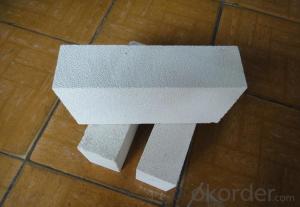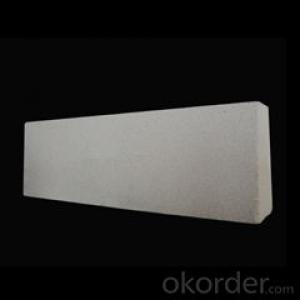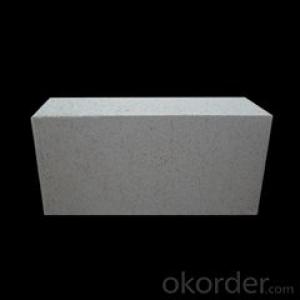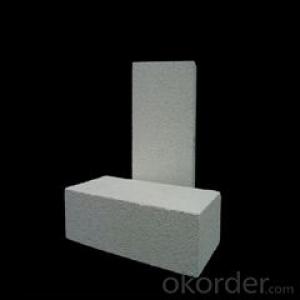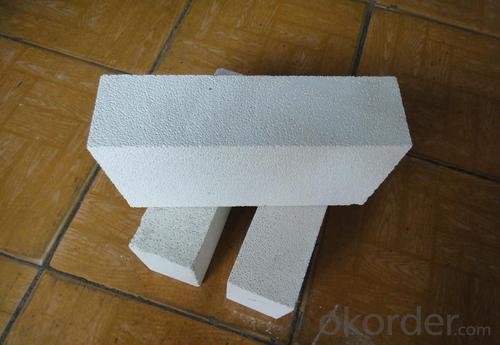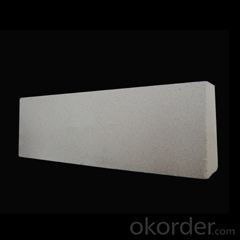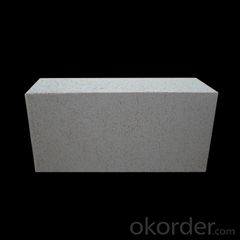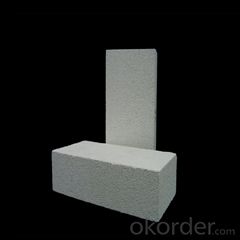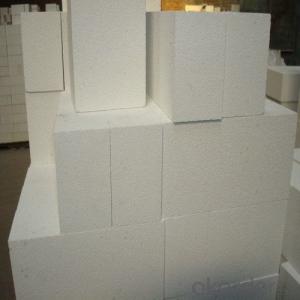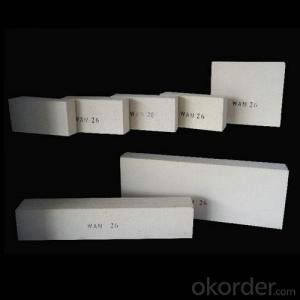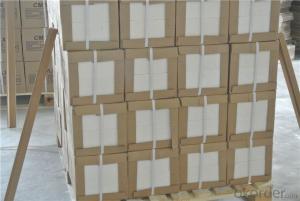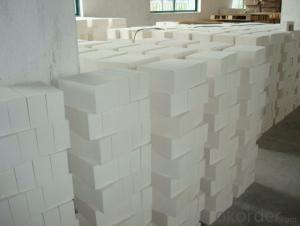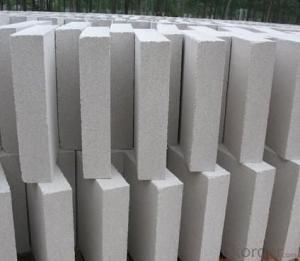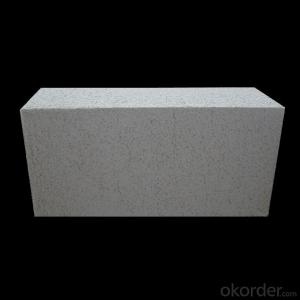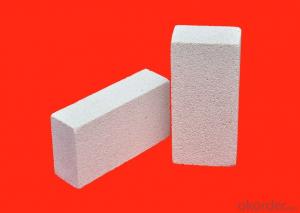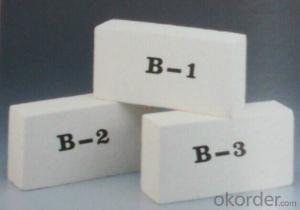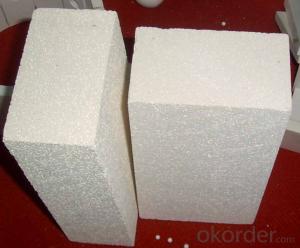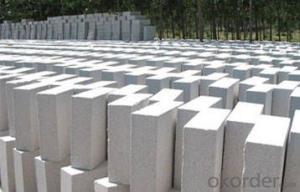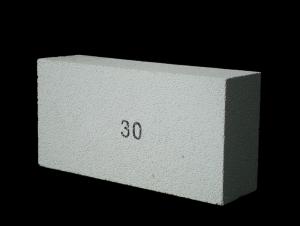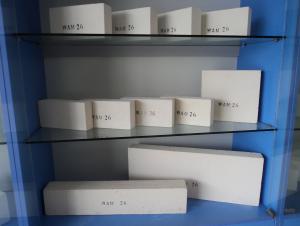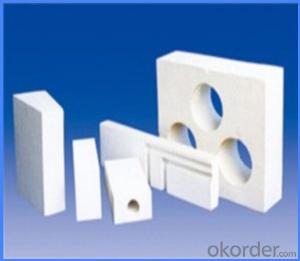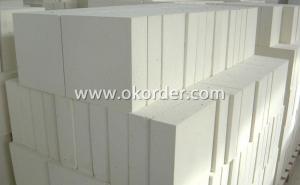Insulating Fire Brick - Refractory Mullite Insulating Refractory Brick JM 92
- Loading Port:
- Shanghai
- Payment Terms:
- TT OR LC
- Min Order Qty:
- 5000 kg
- Supply Capability:
- 10000 kg/month
OKorder Service Pledge
OKorder Financial Service
You Might Also Like
Refractory mullite insulating refractory brick JM 23
Okorder series heat insulation brick
Okorder series thermal insulation brick is an effective, energy saving, low carbon, environmental protection advanced, according to the ASTM standard manufacturing products. Okorder series products are best Li Ning and insulation in all types of industrial furnaces in the metallurgical field, aluminum, petrochemical, electric power and glass ceramic materials. They can be used as part of the working layer of thermal insulation or non - melting. Products have been widely used in the following furnace, achieved satisfactory results.
Application of heat preservation brick
Metallurgical Industry: blast furnace, hot blast furnace, heating furnace, etc..
Petrochemical Industry: ethylene cracking furnace, hydrogen production furnace, primary reformer, heating furnace, etc..
Ceramic industry: roller kiln, kiln, etc..
Glass industry: glass furnace regenerator, etc.
Carbon industry: carbon furnace, etc..
Aluminum electrolysis industry: aluminum reduction cell, etc.
Other industries: tunnel kiln, shuttle kiln, etc..
Advantages of heat insulation brick
Low thermal conductivity: more porosity will bring good thermal insulation effect, energy saving.
High crushing strength: high crushing strength, volume stability.
Low heat storage: small heat storage to absorb more heat, energy-saving effect is obvious.
Gao Chundu: iron, alkali metal impurity content is low.
The precise size: Brick size processing precision, special shape cutting and grinding, accelerate the brickwork.
Insulating brick picture
Common problem solutions
1. What products do you have?
We have all kinds of refractory bricks, refractory casting materials, mortar, cement, ceramic fiber products, etc..
Or you can browse our products to choose what you need.
2. How to control product quality?
With strict quality control system throughout the material selection and production process, we have the quality of refractory materials and ceramic fiber products to meet customer requirements.
From the selection of raw materials, the quality of our control to start. The quality certificate of the raw material is required, each batch of the products are to be tested in the use of the forward line. In the production process, the quality control by the workers, and then each piece of classification, and through the quality supervision and inspection.
3. Can you give me a brief introduction to the application of your product?
My company is mainly engaged in refractories in the steel, cement, glass, ceramics, petrochemical, electric power and other industries.
4. What information do you need if I need you?
In order to select the right products, we will provide us with information, such as the United States, technical data, order quantity, product application, etc..
If you have any questions, please contact us.
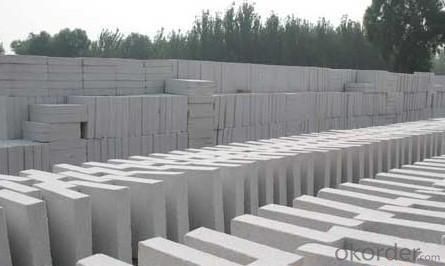
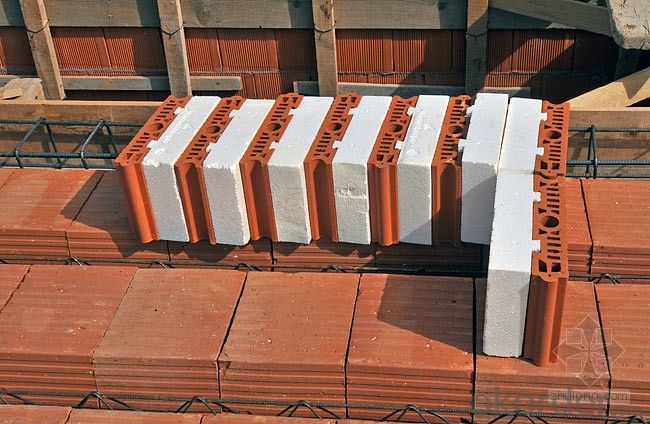
- Q: Can insulating fire bricks be used in the construction of smelter crucibles?
- Yes, insulating fire bricks can be used in the construction of smelter crucibles. Insulating fire bricks are made from materials that can withstand high temperatures, making them suitable for use in smelting operations. These bricks have low thermal conductivity, which helps to retain heat and prevent excessive heat loss from the smelter crucible. This makes them ideal for creating a well-insulated and efficient crucible that can withstand the intense heat and thermal shock associated with smelting processes. Additionally, insulating fire bricks are lightweight and easy to shape, allowing for convenient construction and customization of the crucible design. Overall, using insulating fire bricks in the construction of smelter crucibles can help to improve the thermal efficiency and durability of the crucible, leading to more efficient and effective smelting operations.
- Q: Can insulating fire bricks be used as a lining for kiln cars?
- Yes, insulating fire bricks can be used as a lining for kiln cars. Insulating fire bricks are designed to have excellent thermal insulation properties, which make them suitable for use in high-temperature applications such as kilns. They are capable of withstanding high temperatures without cracking or crumbling, making them an ideal choice for lining kiln cars. Additionally, their lightweight nature makes them easy to handle and install, reducing the overall weight and energy consumption of the kiln. Overall, insulating fire bricks can provide effective insulation and protection for kiln cars, helping to improve their efficiency and longevity.
- Q: Are insulating fire bricks resistant to hydrogen sulfide?
- In general, hydrogen sulfide is not withstood by insulating fire bricks. This highly corrosive gas has the ability to react with various substances, including fire bricks. Fire bricks, although engineered to endure high temperatures, lack a specific resistance to chemical corrosion. Consequently, when fire bricks encounter hydrogen sulfide, they may deteriorate gradually, resulting in possible harm or malfunction. Hence, it is advisable to employ alternative materials specifically crafted to withstand corrosion caused by hydrogen sulfide in situations where this gas is anticipated.
- Q: Can insulating fire bricks be used in metal melting furnaces?
- Indeed, metal melting furnaces can utilize insulating fire bricks. Specifically tailored to endure high temperatures and offer exceptional insulation, these bricks prove to be an optimal selection for applications such as metal melting furnaces. These bricks possess a low thermal conductivity, which aids in heat preservation and diminishes energy usage. Furthermore, insulating fire bricks are lightweight, long-lasting, and capable of withstanding thermal shock, rendering them a fitting choice for the severe conditions experienced in metal melting furnaces.
- Q: Can insulating fire bricks be used as a refractory lining material?
- Insulating fire bricks can indeed serve as a refractory lining material. Their purpose is to effectively insulate against heat transfer by having low thermal conductivity. This quality makes them suitable for applications that necessitate the maintenance or control of high temperatures, such as kilns, furnaces, and industrial ovens. High-temperature environments require refractory lining materials to safeguard their structure against the intense heat generated within. These materials must withstand thermal shocks, chemical reactions, and mechanical stresses that occur during operation. Insulating fire bricks are a prime choice for refractory lining applications due to their exceptional thermal insulation properties and high temperature resistance. In addition to being excellent insulators, insulating fire bricks have the added benefit of low density, making them lightweight and easy to handle and install. This advantage proves useful in applications where weight is a concern or where frequent replacement or repair of refractory linings is necessary. It is important to acknowledge that the specific type and composition of insulating fire bricks may vary, and different applications may require different properties. Therefore, it is vital to consult with a refractory engineer or supplier to guarantee that the chosen insulating fire bricks are appropriate for the specific requirements of the application.
- Q: Can insulating fire bricks be used in cement plants?
- Yes, insulating fire bricks can be used in cement plants. Insulating fire bricks are designed to withstand high temperatures and are commonly used in industries that require thermal insulation. In cement plants, they can be used in various applications such as lining kilns, furnaces, and other high-temperature equipment. These bricks help in reducing heat loss, improving energy efficiency, and ensuring consistent and controlled temperatures in the cement production process. Additionally, insulating fire bricks are lightweight and have low thermal conductivity, making them an ideal choice for insulating applications in cement plants.
- Q: Can insulating fire bricks be used in the construction of blast furnaces?
- Yes, insulating fire bricks can be used in the construction of blast furnaces. Blast furnaces require insulation to maintain high temperatures, and insulating fire bricks offer excellent thermal insulation properties. These bricks are made from lightweight materials such as clay and alumina, which can withstand high temperatures without melting or deteriorating. They have low thermal conductivity, meaning they can effectively reduce heat loss and conserve energy within the blast furnace. Additionally, insulating fire bricks have good resistance to chemical reactions, making them suitable for the harsh conditions present in blast furnace environments. Overall, insulating fire bricks are a preferred choice for blast furnace construction due to their insulation capabilities and ability to withstand high temperatures.
- Q: Can insulating fire bricks be used in the construction of refractory coatings?
- Yes, insulating fire bricks can be used in the construction of refractory coatings. Insulating fire bricks are designed to have low thermal conductivity, making them suitable for insulating applications. When used as a component in refractory coatings, they can help to enhance the insulation properties and provide thermal protection.
- Q: Are insulating fire bricks resistant to weathering or aging?
- Yes, insulating fire bricks are highly resistant to weathering and aging. These bricks are specifically designed to withstand extreme temperatures and harsh environmental conditions. They are made from high-quality refractory materials, such as alumina, silica, and other additives, which provide excellent thermal insulation properties and high resistance to corrosion and erosion. The manufacturing process of insulating fire bricks involves carefully selected raw materials and precise control of firing temperatures, resulting in a dense and uniform structure. This structure prevents the penetration of moisture and other weathering agents, ensuring prolonged durability and resistance to aging. Furthermore, insulating fire bricks are also resistant to thermal shock, meaning they can withstand rapid temperature changes without cracking or crumbling. This characteristic further enhances their ability to endure adverse weather conditions. Overall, insulating fire bricks have proven to be highly reliable in various applications where exposure to weathering elements is a concern. They are widely used in industries such as steel, ceramic, glass, and cement manufacturing, as well as in high-temperature applications like kilns, furnaces, and chimneys.
- Q: Can insulating fire bricks be used as insulation for pizza ovens?
- Yes, insulating fire bricks can be used as insulation for pizza ovens. Their high heat resistance and ability to retain heat make them an ideal choice for insulating the oven and maintaining the desired temperature for baking pizzas.
Send your message to us
Insulating Fire Brick - Refractory Mullite Insulating Refractory Brick JM 92
- Loading Port:
- Shanghai
- Payment Terms:
- TT OR LC
- Min Order Qty:
- 5000 kg
- Supply Capability:
- 10000 kg/month
OKorder Service Pledge
OKorder Financial Service
Similar products
Hot products
Hot Searches
Related keywords
